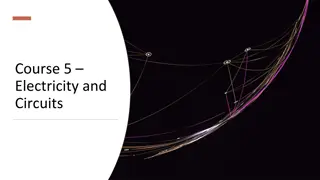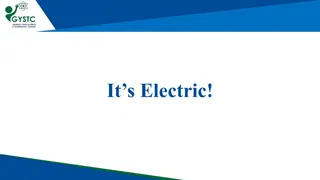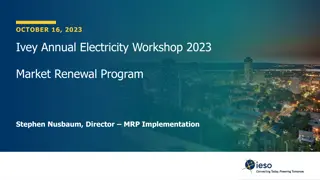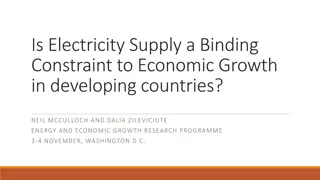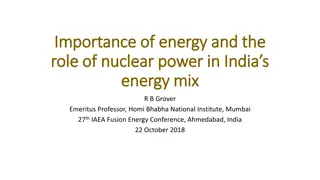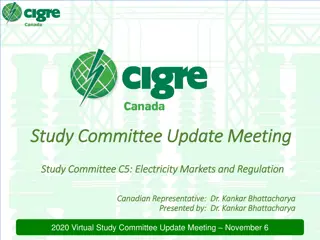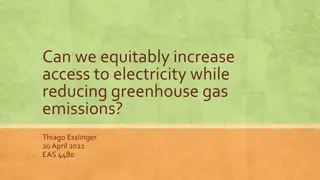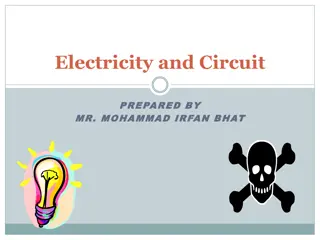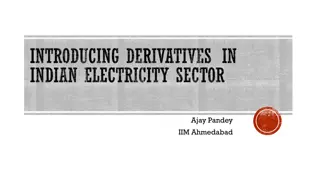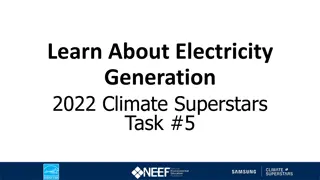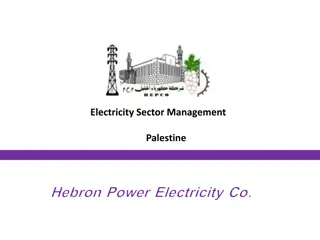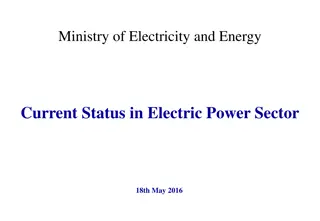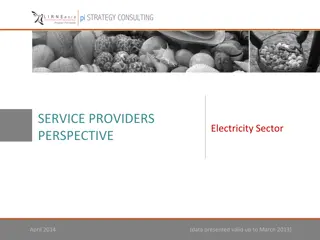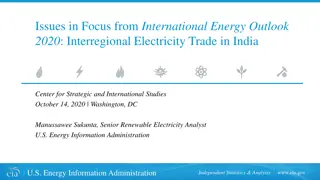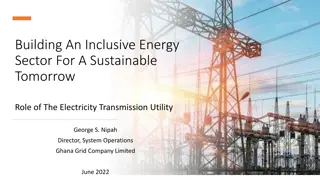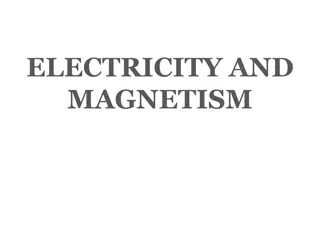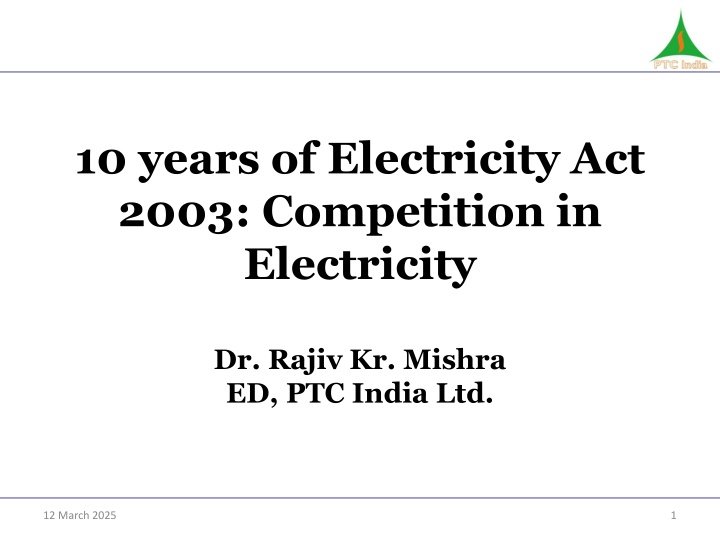
Significant Changes in Electricity Sector
Generators and consumers were previously restricted to specific distribution companies, but this changed with the Electricity Act of 2003. The Act aimed to promote competition, efficiency, and market development in the electricity sector, leading to reduced costs, fuel usage, and environmental impacts. Provisions in the Act facilitated open access, electricity trading, and competitive bidding, although challenges such as inadequate preparation and risk sharing persist.
Download Presentation

Please find below an Image/Link to download the presentation.
The content on the website is provided AS IS for your information and personal use only. It may not be sold, licensed, or shared on other websites without obtaining consent from the author. If you encounter any issues during the download, it is possible that the publisher has removed the file from their server.
You are allowed to download the files provided on this website for personal or commercial use, subject to the condition that they are used lawfully. All files are the property of their respective owners.
The content on the website is provided AS IS for your information and personal use only. It may not be sold, licensed, or shared on other websites without obtaining consent from the author.
E N D
Presentation Transcript
10 years of Electricity Act 2003: Competition in Electricity Dr. Rajiv Kr. Mishra ED, PTC India Ltd. 12 March 2025 1
Scenario before Electricity Act 2003 Before Electricity Act 2003, generators as well as consumers were bound to a particular discom No choice to sell or buy from This model was sometimes misused by discoms payments were delayed World over, competition and market development resulted in Significant gains in efficiency Lower costs Reduced fuel use Environmental controls Fewer power plants needed to meet the demand With these basic presumptions, Electricity Act 2003 was introduced 12 March 2025 2
Electricity Act 2003 and Competition Electricity Act 2003 introduced various enabling provisions for creating a vibrant power market in the country Promoting competition one of the objectives of the Act Recognition of Electricity Trading as a distinct activity Open Access was defined Providing non-discriminatory OA one of the functions/duties of Transmission Utilities & Licensees (Section 38) OA to be provided to everyone having load more than 1 MW within 5 years from notification of the Act (Section - 42) Appropriate Commission to consider factors which would encourage competition while specifying terms and conditions of tariff determination (Section- 61) Promotion of competition one of the functions of Commissions (Section 79) 12 March 2025 3
Competitive Bidding Case-1, case-2 bidding were viewed as fundamental change to attract private sector and discover competitive prices However, serious issues persists Lack of capacity/inadequate preparation for handling competitive process at utility level Inequitable risk sharing Fuel risks and foreign currency risks passed on to bidders Long drawn negotiation process Frequent changes and non-finalization/cancellation Numerable cases where commitments were not fulfilled as per LOI or even LOI was cancelled either by procurer or by developer resulting in shortage of power for procurer and loss of opportunity for developer Lock-in period for developers Investments stuck up There are few successes and the process of procurement through case-1 bidding has either stalled or has not given optimum benefits Examples Examples 12 March 2025 4
Open Access Two types of OA OA in Transmission (for Generators and Distributors) OA to consumers (for retail or industrial consumers having load more than 1 MW) Benefits Enable competition in generation & supply choice to discoms and bulk consumers Would facilitate power trading and redistribution of surplus across the system Higher techno-economic efficiencies Optimal utilization of wires Essential for much needed private investment Quality and reliable power supply Difficulties in full scale implementation of OA 12 March 2025 5
Open Access contd Provided on month to month basis States invoked Section 11 of the Electricity Act to disallow OA to generators within the state which is meant to be invoked circumstances, not to restrict open access Distribution companies (Discoms) are resistant to giving OA to industrial consumers (bulk consumer category), since industrial supply rates are usually high Since most of distribution utilities are facing shortages, providing OA would be beneficial to them as they would be provide more reliable supply to existing customer High cross-subsidy and wheeling charges are one of the major deterrents in availing OA Sometimes, metering infrastructure and mechanism to settle deviations not in place Congestion in transmission another bottleneck only in extraordinary 12 March 2025 6
Way Forward Best system is one where consumer has a choice that comes out of competition Competition and markets do not have to wait for shortages in supplies to be overcome Trading is a bridge even in shortage situations Immediate need for strengthening transmission network Bottled up capacities of IPPs and CPPs need to be tapped in a commercial way Vital necessities for competition (lessons from around the world): Adequate availability of power Its unrestricted flow across geographical boundaries Strong commercial mechanism Paying ability of consumers Enabling rules and regulations at each level (intra and inter state) Reasonable wheeling, cross-subsidy and other charges 12 March 2025 7
Visit us at www.ptcindia .com 12 March 2025 8
Indian Power Market Power Trading growth Absolute volume has grown from 22 BUs in 2008 to 99 BUs in FY13 As percentage of total generation, ST market has grown from 3% in 2008 to 11% in FY13 Power Exchanges started in 2008 Two exchanges IEX and PXIL PTC co-promoter of first National PX Indian Energy Exchange (IEX) has > 97% market share Type of Trades Day Ahead Market (DAM) 95% of PX trades Term Ahead Market (TAM) 5% of PX trades Renewable Energy Certificates (RECs) 120 12 100 10 80 8 60 6 40 4 20 2 0 0 FY10 FY11 FY12 FY13 ST Market Volume (BUs) % of Generation Development of Power Trading has created Market Structure facilitating private investment in the sector 12 March 2025 9
Power Market Over the Last Two Fiscals Growth of Different Components of ST Market Year Bilateral (Traders + TAM) Direct Bilateral Power Unscheduled Interchange (UI) Total Volume in ST Exchanges (PX) (Only DAM) 2011-12 (MU) 35840 15370 15550 27760 94510 2012-13 (MU) 36638 14519 23024 24759 98940 Growth (%) 0.21 -5.55 55.34 -10.80 4.69 Share of Different Segments in Total ST Volume Bilateral (Traders + TAM) 37% 2011-12 2012-13 Bilateral Traders 38% UI 25% UI 29% PX 17% PX 23% Direct Bilateral 16% Direct Bilateral 15% Source: CERC 12 March 2025 10
Bilateral vs Power Exchange Prices (Rs./kWh) Bilateral vs PX Prices (2012-13) Bilateral PX 5 4.5 4 Buyers ready to pay premium for certainty in Bilateral contracts 3.5 3 2.5 2 Apr May Jun Jul Aug Sep Oct Nov Dec Jan Feb Mar Bilateral vs PX Prices (2011-12) Bilateral prices more or less stable whereas PX prices highly volatile 6 5 4 3 2 1 0 Apr May Jun Jul Aug Sep Oct Nov Dec Jan Feb Mar Source: CERC Market Monitoring Cell s reports 12 March 2025 11
Power Exchange Rate in NEW & SR (Rs./kWh) NEW vs SR Price on IEX (2012-13) NEW 14.00 SR 12.00 10.00 Fragmented market 8.00 SR facing deficit, higher prices 6.00 4.00 Interconnec tion expected by Mar 14 2.00 0.00 Apr May Jun Jul Aug Sep Oct Nov Dec Jan Feb Mar Source: IEX website 12 March 2025 12
State-wise Power Demand (MUs) 140,000 120,000 100,000 80,000 60,000 40,000 20,000 - Orissa DVC Delhi Punjab Goa Karnataka Uttarakhand Kerala Tamil Nadu West Bengal Manipur Nagaland Dadar Nagar Haveli Bihar Jharkhand Arunachal Pradesh Chandigarh Chattisgarh Uttar Pradesh Gujarat Haryana Mizoram Daman & Diu Sikkim Jammu & Kashmir Maharashtra Pondicherry Meghalaya Tripura Himachal Pradesh Rajasthan Madhya Pradesh Assam Lakshadweep Andhra Pradesh Andaman- Nicobar 2012-13 Source: CEA 12 March 2025 13
State-wise Power Trade: Bilateral Source: CERC MMC Reports 12 March 2025 14
State-wise Power Trade: Power Exchanges Source: CERC MMC Reports 12 March 2025 15
State-wise Power Trade: UI Source: CERC MMC Reports 12 March 2025 16
Competitive Bidding: Examples Maharashtra (300 MW) JSW (Ratnagiri) won bid for 300 MW PPA signed in 2010 It was asked to install Flue Gas Desulphurization System (FGD) by government authorities which it cited as Change of Law and want to get out of PPA Adani s Mundra Project PPA with Gujarat (1000 MW) and Haryana (1425 MW) In December 2009, it unilaterally terminated the said PPA citing unavailability of coal from Gujarat Mineral Development Corporation (GMDC) Tata s Mundra Project Country s first UMPP (4000 MW) Petitioned before CERC to increase tariff citing change of law in foreign country CERC Order CERC has concluded that there is a case for compensation on account of change in law in foreign country but the order is yet to be implemented Back 12 March 2025 17

